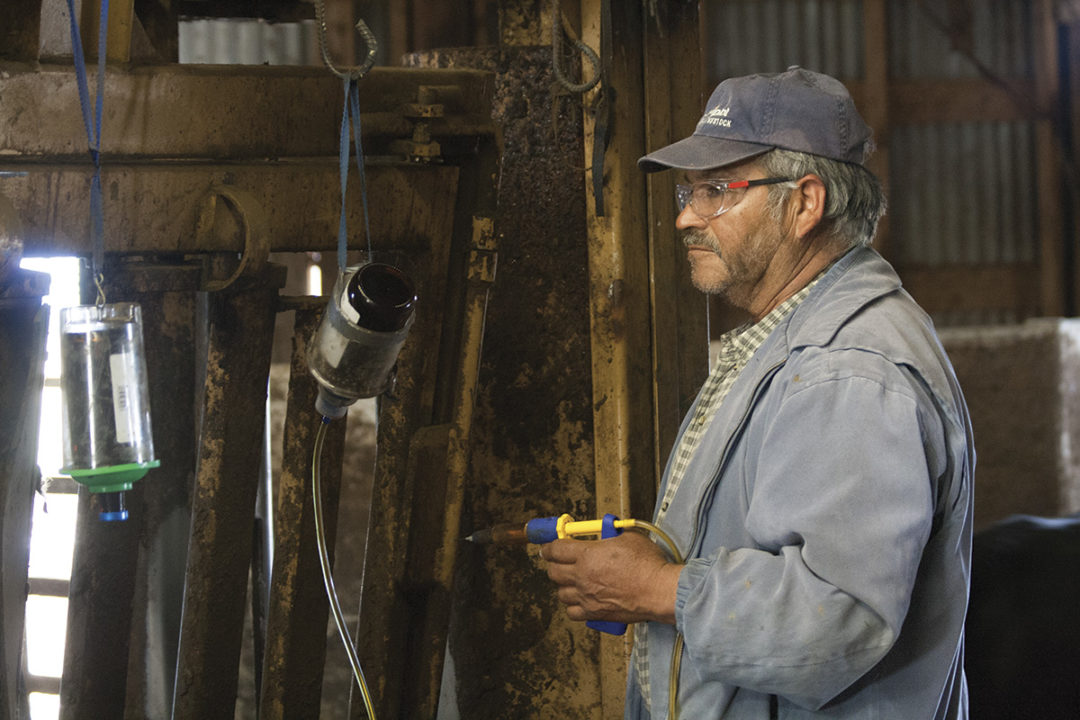Research has shown that, in the feedyard environment, workers experience a high number of safety-related incidents and injuries each year. With a high density of cattle, use of horses, use of heavy equipment and exposure of workers to extreme weather conditions, risky conditions are a daily reality.
Studies have also determined that some 50% of feedyard workers are Latino. Combining the inherent risks of a feedyard with a language barrier that significantly hampers communication can set the stage for serious incidents and injuries.
Athena K. Ramos, an associate professor in the department of health promotion at the University of Nebraska Medical Center’s (UNMC) College of Public Health, is one member of a Feedyard Safety Network (FSN) team that has been working since 2017 to support and promote safety and health management programs in the cattle feedyard industry. Cattle feedyards play a critical role in beef production systems, accounting for $67.1 billion in cash receipts in 2018.
Ramos and one of her research colleagues, Ryan Klataske, an ethnographer and consultant, have interviewed more than 253 immigrant feedyard workers in the recent past, finding that 75% of them reported experiencing an injury at work.
“The most frequent injuries that were reported were bruises, cuts, sprains and strains, which were usually caused by animals, tools that were used or sometimes by use of chemicals,” Ramos says. “The primary cause of these injuries was animals.”
Common risk factors in this study revealed that the majority of those injured were working in a large feedyard, worked more than eight hours per day and were over the age of 35. The research data also revealed that employee training was frequently minimal, and issues related to language difficulties often played a role in a lack of training for immigrant workers.
“Even if we all speak English, we don’t always clearly understand what’s being communicated,” Ramos says. “Some feedyards have bilingual resources, which is often another feedyard worker. However, when it comes to training, we can’t ensure the quality of the training information that’s being translated. Is the full message being appropriately conveyed? Do employees fully understand the training information?”
Available resources
Ramos and her colleagues recognize that feedyard managers are doing the best they can to train employees with available resources. To facilitate those efforts, they and their team have developed resources which are available at no cost to feedyard managers.
“There is increasing recognition that reducing injuries and illnesses among feedyard workers is a critical part of retaining a skilled workforce, decreasing losses and improving operation sustainability,” Ramos says. “In focusing on how we can facilitate immigrant worker training efforts, our team has developed several resources designed to improve communication between feedyard managers and workers who speak a language other than English.”
The Central States Center for Agricultural Safety and Health (CS-CASH) started working in the fall of 2016 on improving health and safety in the cattle feeding industry. Their projects have involved industry workers and stakeholders. One outcome has been the development of the Feedyard 15, a safety training curriculum which addresses safety issues commonly found in feedyard operations. Those issues include slips/trips/falls, ATVs/UTVs, feedmills, processing cattle, horsemanship, emergency response, silage and manure lagoons.
Part of the CS-CASH efforts includes a focus on the Latino immigrant workforce. Recently, the team has developed a bilingual (English/Spanish) picture glossary to help facilitate communication on the yard.
“The Feedyard 15 curriculum is available in both English and Spanish,” Ramos says. “That makes a feedyard manager’s training work much easier because the translation is already done. We’re also in the process of completing a picture glossary that illustrates common safety words to help non-English speaking workers understand these safety concepts.”
The team is finalizing an emergency response form that can be posted throughout a feedyard with information that would be critical to effectively responding to an emergency.
“Users can write in the name and address of the feedlot, name of the manager, the supervisor’s phone number, etc.,” Ramos says. “We recognize that language is such a core and important topic, especially in the feedyard. Overcoming language barriers is critical for the safety of all feedyard workers.”
To access these resources and register online, go to the Feedyard 15 Program website and click on the “Register” link at the bottom of the page. Once registered, all the curriculum and resources are available.
Creating a focus on well-being
Ramos notes that safety in the workplace isn’t just about reducing worker injuries. It’s about creating a culture that focuses on well-being. It’s about thinking broadly to include physical, mental and social aspects of team members’ lives and being able to integrate workplace protections and promote health more generally. The most successful safety practices incorporate physical, emotional and social well-being into the work environment and focus on workers’ quality of life and ability to thrive.
She says a focus on workplace health that encompasses worker health and safety outside the work environment has been shown to provide the greatest positive changes when it comes to feedyard employee safety.
“Our study found that workers often don’t report common health issues, such as stress or chronic health conditions, sometimes for fear of losing their job,” Ramos says. “By providing information about health issues such as stress, helping workers understand what it is, how it affects their health and what they can do to manage it, feedyard managers can develop a safety environment that uses a total worker health and safety approach.”
Ramos and her colleagues have also learned that feedyard managers who have successfully implemented an overall safety and health program often use simple techniques to accomplish safety goals.
“You don’t want to simply check off a list of safety training activities to say that they’ve been done,” Ramos says. “It’s important that workers know you care about them as people. Demonstrating that may be as simple as a 30-second conversation around the water cooler. Take a few moments to ask people how they’re doing, how their family is doing. Creating and building relationships makes people feel safe in talking about their life outside work. They don’t feel they’re constantly being watched or judged.”
Listening can also be a valuable element of an effective safety environment.
“Often, there’s more than one way to accomplish a task,” Ramos says. “If we’re open to why a worker completes a task the way they do, we may learn something new or a better way to do the work. Being open to listening and considering that we may not have all the answers is an important skill in any workplace.
“When people feel valued and have a trusting relationship with managers, they will be more likely to report near misses and good catches,” Ramos adds. “Some feedyard managers share a meal with workers once each week. Some have organized events like a feedyard rodeo that all the workers’ families attend. Sometimes, as much as we want a formal training program, showing our team members how valuable they are can help overcome language and other barriers that hinder working safely.”










